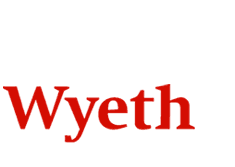 . The Amerikat over at our partner blog IP Kat has already covered the legal aspects of the case and can be read in more detail here.
. The Amerikat over at our partner blog IP Kat has already covered the legal aspects of the case and can be read in more detail here.The concept of the patent term adjustment is – as far as I know – unique to the United States and is governed by the provisions of the US Patent Code 35 U.S.C. 154.. This provision provides that a patent term (lifetime) will be extended if one of three situations occurs:
i) The US PTO fails to issue a first office action within fourteen months after filing or respond to a reply (or appeal) within four months from filing the reply (or issuing the patent within four months if the issue fee is paid). This is referred to as the A-delay.
ii) The US PTO fails to issue the patent within three years after filing. This is the B-delay.
iii) The patent is subject to an interference proceedings, secrecy order or appeal. This is the C-delay (and played no role in the decision).
The two most common reasons for a possible extension of the patent term beyond the statutory twenty years are the failure to respond to a reply in a timely manner and failing to issue the patent within three years.
In the past the US PTO took the view that only the longer of the A or the B delay was relevant. The US Court of Appeals for the Federal Circuit disagreed in an opinion issued on 7 January 2010. There can be no "double counting" of delay days. However there could be an accumulation of delay. A patent holder - in this case Wyeth - could be entitled to both an extension based on an A-delay and an extension based on a B-delay, less any "double counted days" in which there was both a delay under A and B (which would represent delay days in responding to a reply to an office action after the three year period has expired. So, if the US PTO takes more than three years in granting the patent and then takes an additional length of time to issue the patent, the patent holder is entitled to an additional three years plus additional time of lifetime of its patent.
This may not seem so important since many (most) patents are terminated before the end of the twenty year lifetime. However, in some technologies even an extra month’s protection may be significant. Suppose the patent protects a "blockbuster"drug. The US PTO takes over three years to grant the patent and also delays issuing office actions. The extra patent time granted can add significantly to the profits made as generics may be delayed from enterin the market.
 The European Union in its pharmaceutical sector enquiry defined a block buster drug as being one with global revenues of over USD 1 billion in revenues (see Executive Summary, page 3) worldwide. Patent Term Extensions are only available in the US. The pharmaceutical sector enquiry's final report noted that the US market represented 42% of prescription drug sales (see report, page 27, Fig. 3- So, if we assume that the US makes up 42% of the market (i.e. USD 420 million in revenues), then every extra month of extension is worth USD 35 million in revenues in US sales alone. The final report goes on to state that a rather conservative estimate suggests that 30% of the turnover is profit (see paragraph 68 on page 28) which means that every extra month of extension represents a profit of USD 10.5 million.
The European Union in its pharmaceutical sector enquiry defined a block buster drug as being one with global revenues of over USD 1 billion in revenues (see Executive Summary, page 3) worldwide. Patent Term Extensions are only available in the US. The pharmaceutical sector enquiry's final report noted that the US market represented 42% of prescription drug sales (see report, page 27, Fig. 3- So, if we assume that the US makes up 42% of the market (i.e. USD 420 million in revenues), then every extra month of extension is worth USD 35 million in revenues in US sales alone. The final report goes on to state that a rather conservative estimate suggests that 30% of the turnover is profit (see paragraph 68 on page 28) which means that every extra month of extension represents a profit of USD 10.5 million.Technorati Tags:
Patent Term Adjustment, Wyeth
No comments:
Post a Comment